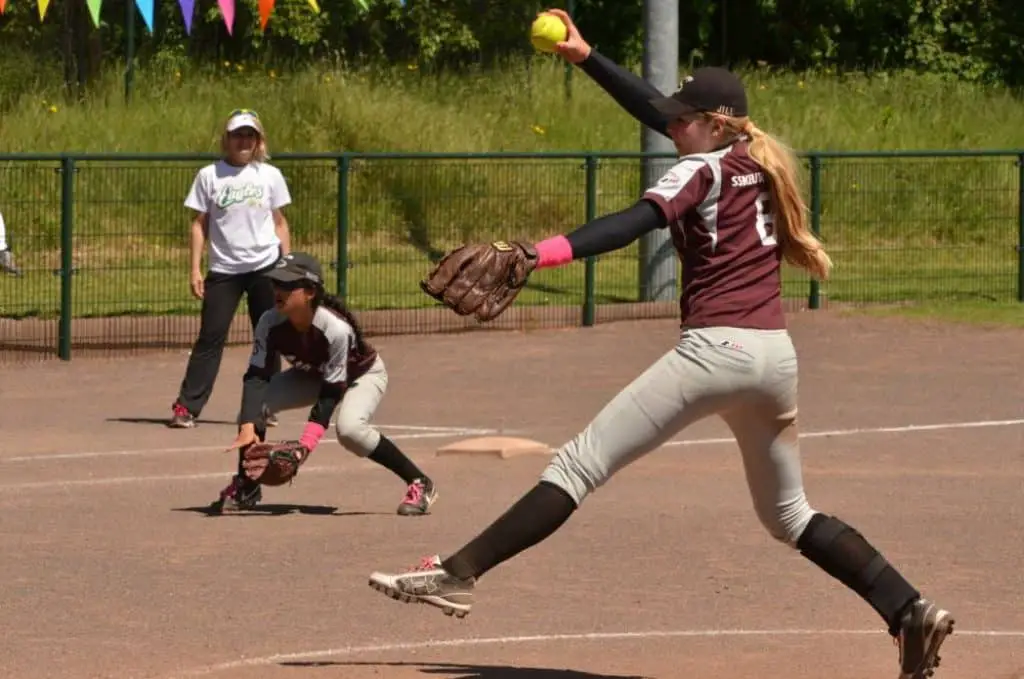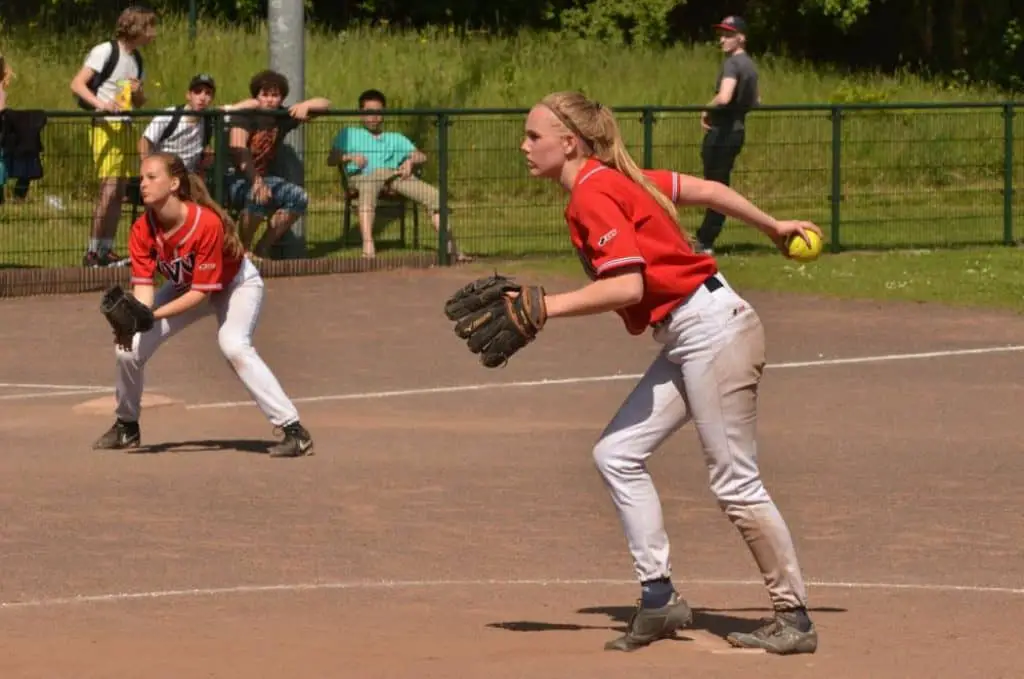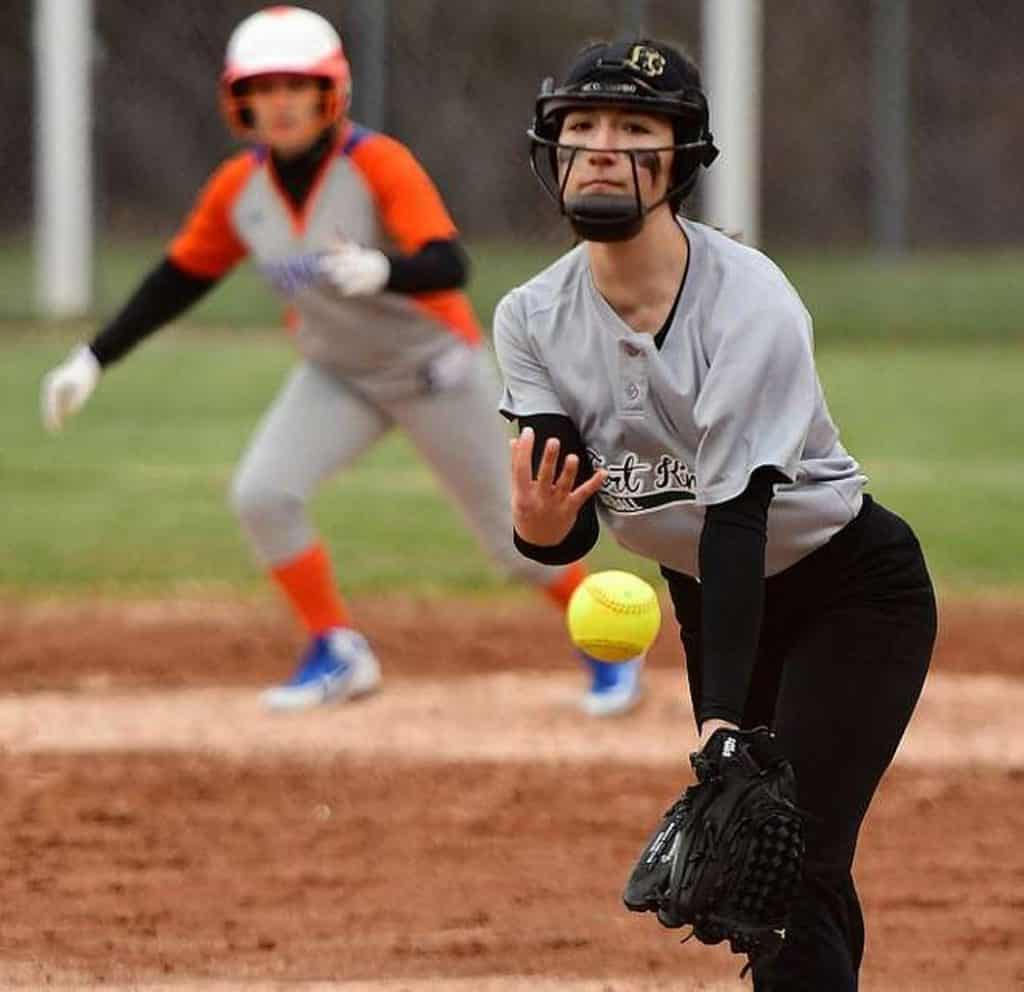What Does WHIP Mean In Softball & What Is A Good WHIP?
The days of just looking at the raw numbers and relying on the eye test when evaluating a player’s performance in softball are long gone.
The rise of advanced statistics and sabermetrics in baseball over the last couple of decades also resulted in softball becoming a more stats-oriented game.
Today, softball is, just like baseball, a fully stats-drive sport. The modern statistical categories in softball are more or less imported from baseball.
When it comes to pitching, virtually all stats used nowadays are the same as those used in baseball.
The only difference when evaluating a pitcher statistically is that, in softball, there are only seven innings, compared to baseball’s nine.
The pitching stat that probably comes up most frequently is WHIP.
Below, I’ll look into what does WHIP mean in softball, explain what is a good WHIP in softball, and compare this statistical category to other major pitching stats.
So, let’s dive in!
Table of Contents
What Does WHIP Mean In Softball?

WHIP (walks plus hits per inning pitched) is probably the simplest way to evaluate a pitcher’s performance.
It provides an insight into how successful a pitcher is in one of its main tasks – keeping runners off basepaths.
So, in its essence, WHIP is fairly simple – it tells us how many base runners one pitcher allows per one inning.
As run prevention involves both pitching and defense, WHIP encapsulates both the walks and the hits.
This means that WHIP measures not only the pitcher’s individual contributions but everything that happens while a certain player is pitching.
For example, a pitcher is solely responsible for an allowed home run, but for a single, they share the fault with the whole defense.
This way, we can also measure the pitcher’s effectiveness against each individual batter. As different batter take their place at the home plate, pitchers’ WHIP can go up or down.
What Is A Good WHIP In Softball?
A statistical category such as WHIP doesn’t mean much on its own.
To understand how successful a pitcher is, you need some benchmarks that can point to how good is a certain value of WHIP in softball.
Like most stats in softball, the lower the WHIP, the better.
If a softball player has a low WHIP, then they’re most likely very good in some of the most important skills for a pitcher: missing bats, avoiding balls, and inducing grounders.
For children’s leagues, U12 or lower, any WHIP below 2.00 is good, while for adults the following benchmarks are a good guide:
| WHIP of 1.00 or lower | Excellent |
| WHIP between 1.01 and 1.10 | Great |
| WHIP between 1.11 and 1.20 | Above Average |
| WHIP between 1.21 and 1.30 | Average |
| WHIP between 1.31 and 1.40 | Below Average |
| WHIP higher than 1.41 | Poor |
How Do You Calculate WHIP In Softball?

Calculating WHIP in softball is fairly easy and can be done with stats available in the boxscore.
It’s as simple as adding Walks (or Base on Balls) and Hits allowed and then dividing that sum with the total numbers of innings pitched.
So, only innings in which a certain pitcher has been on the mound count. This is the basic WHIP formula:
WHIP = (Walks + Hits) / Innings
For example, a pitcher that has pitched for 230 innings over the season and allowed 50 walks and 200 hits will have the following WHIP:
WHIP = (200 + 50) / 230 = 1.087
To make things clearer, Walks are advances to the first base awarded to a batter after taking four pitches that are balls.
Hits account for any hit that allows a batter to get to the base safely without force play, error, or fielder’s choice.
An Inning, is, of course, a period of regulation play.
What Is An ERA In Softball?
An ERA is another stat that originated in baseball but is widely used in softball.
ERA stands for earned run average. It indicates how many runs on average a pitcher allows in a full game pitched.
The formula for ERA is the same in both sports, with the only difference being that the number of innings in softball is 7, not 9.
Of course, if a certain league has fewer innings in a regular game, then that number will count. So, the formula looks like this:
ERA = (earned runs / innings pitched) * game innings
ERA only accounts for the earned runs. Any run that is the result of another player’s error is not included in the ERA value.
Similar to WHIP, the lower ERA indicates a more successful pitcher.
Properly calculated ERA should give you some idea of how many runs will be scored on a particular pitcher during a game.
What Is More Important ERA Or WHIP?

Both ERA and WHIP can be very useful when evaluating a pitcher’s performance in softball.
Still, each of these statistical categories has certain shortcomings.
In general, they will correlate with each other, meaning that pitchers with lower ERA will commonly also have lower WHIP.
ERA doesn’t take into account runs that are allowed after two outs in any inning. No matter what happens afterward, the ERA doesn’t change.
WHIP, on the other hand, counts for any runner that reaches the base after an error. In that case, ERA stays the same, but WHIP rises.
So, WHIP is more focused on individual events and one bad defensive play may influence a pitcher’s ERA, but the WHIP will stay unaffected.
Conclusion
Watching softball has changed a lot since the old times when our grandparents counted only the basic boxscore stats to determine how good a certain player really is.
With all the modern statistical tools at our disposal, we now have a much better idea of how a player actually performs.
For pitchers, two stats that stand above the rest are WHIP and ERA.
Even though each of them has some disadvantages that, can make them misleading in certain situations, they are still a valuable instrument of pitcher’s evaluation.
They make us understand the game better and, at the same time, help coaches plan better and have better strategies.




